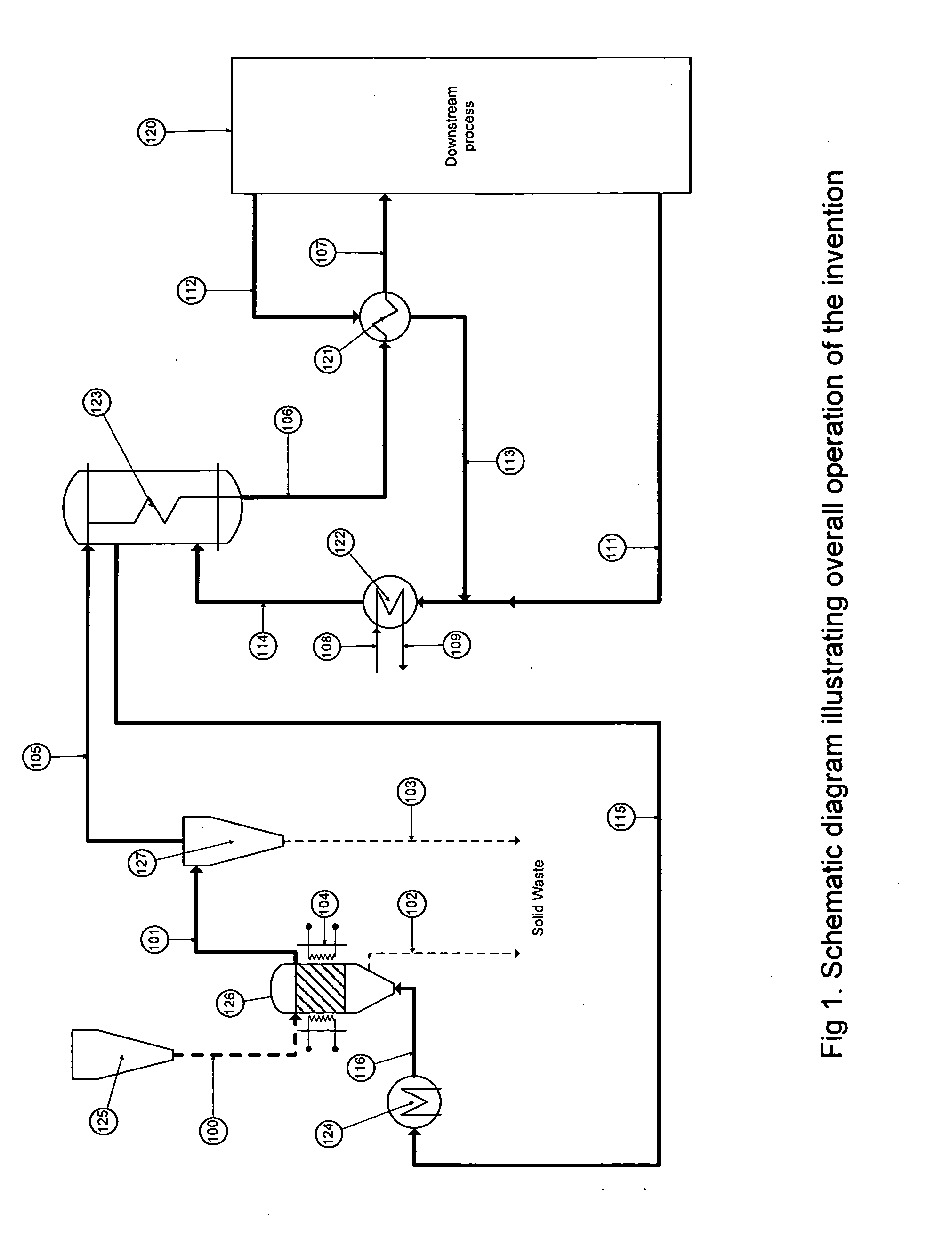Process for hydrogenation of a silicon tetrahalide and silicon to trihalosilane
a technology of trihalosilane and hydrogenation process, which is applied in the direction of halogenated silanes, inorganic chemistry, chemistry apparatus and processes, etc., can solve the problems of increasing capital cost and operating cost, increasing capital cost, and increasing capital cost, so as to improve heat integration, increase reaction rate, and yield the effect of trihalosilan
- Summary
- Abstract
- Description
- Claims
- Application Information
AI Technical Summary
Benefits of technology
Problems solved by technology
Method used
Image
Examples
example 1
[0030]The gas inlet composition is as in Table 1
[0031]ε is the voidage at Umb=0.4
[0032]g is the acceleration of gravity=980 m / s2
[0033]Dp is the diameter of the particle=To be calculated
[0034]ρp is the particle density=2.33 g / cc
[0035]ρf is the fluid density.=0.0218 g / cc
[0036]μf is the viscosity of the fluid=0.00024 poise
[0037]U is the max. superficial velocity=0.11 m / sec=Umb
Therefore the desired minimum average particle size=444 microns. Since MGS is quite angular this particle size should be adjusted by dividing by the sphericity which is typically about 0.86. This gives the average particle size, 516 microns as measured by sieve analysis. Further standard population balance calculations can be made to allow for the shrinkage of the particle due to reaction and the decrease in size due to attrition to arrive at the required minimum average particle size for the feed to the reactor. Once a reasonable estimate has been obtained for the correct particle size for the feed, a test may ...
example 2
[0038]A reactor 10 meters long was charged with a 7 m high bed using MGS of a nominal 750 micron size. The reactor was run for 120 hours under the conditions of Table 1 and batches of metallurgical grade silicon were added once per hour to maintain level. At the end of the run a sample of the MGS in the bed was taken from the bed and analyzed and the results are shown below.
TABLE 2Weight % of Particles in a sieve size rangeSieve sizeParticleMicronsWt % 0-500.03% 50-1000.24%100-1500.61%150-2000.96%200-2500.94%250-3002.44%300-3505.16%350-4003.85%400-4505.49%450-5007.53%500-55010.02% 600-60013.01% 650-65014.88% 650-70016.52% 700-75015.24% 750-8003.08%
The average particle size was calculated at 538 microns
PUM
| Property | Measurement | Unit |
|---|---|---|
| critical pressure | aaaaa | aaaaa |
| critical pressure | aaaaa | aaaaa |
| critical pressure | aaaaa | aaaaa |
Abstract
Description
Claims
Application Information
 Login to View More
Login to View More - R&D
- Intellectual Property
- Life Sciences
- Materials
- Tech Scout
- Unparalleled Data Quality
- Higher Quality Content
- 60% Fewer Hallucinations
Browse by: Latest US Patents, China's latest patents, Technical Efficacy Thesaurus, Application Domain, Technology Topic, Popular Technical Reports.
© 2025 PatSnap. All rights reserved.Legal|Privacy policy|Modern Slavery Act Transparency Statement|Sitemap|About US| Contact US: help@patsnap.com



